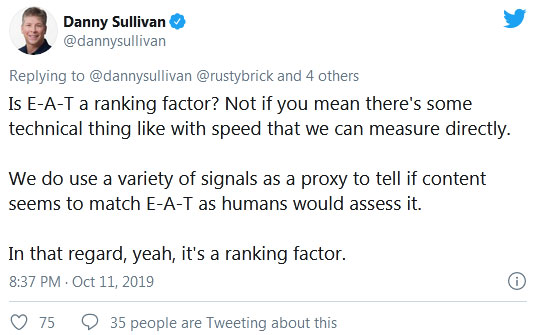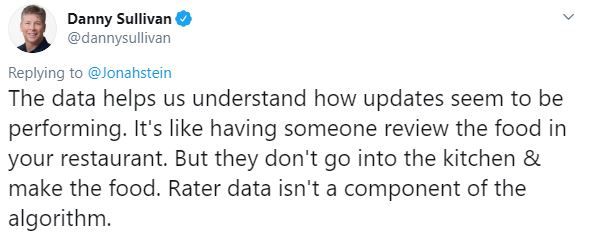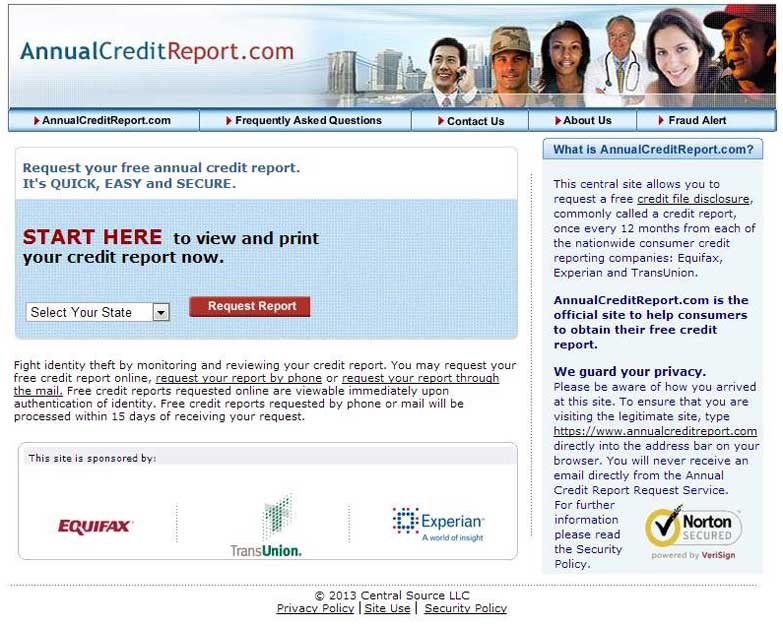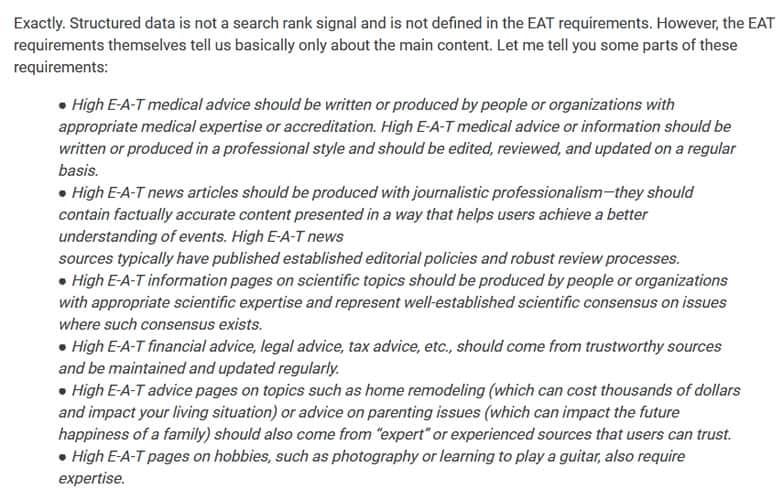What is Google E-A-T in SEO, and How to Improve Your Website’s E-A-T Score?

What is the secret recipe behind outstanding search engine rankings? Starting off with a digression, are we? No, we are not! Think about it a bit explicitly.
Take any SEO project; for example, you are trying your level best, yet the rankings are still utterly unsatisfactory. Wondering what went wrong, what are you missing out on?
Let me tell you – it’s the guidelines!
Google E-A-T (Expertise, Authoritativeness, and Trustworthiness) is a great set of guidelines, which helps you understand what search engines exactly expect from your website and content! I know there are a lot of questions coming in your mind right now about it. Even some of you might be hearing this SEO acronym for the first time, but rest assured, by the time you finish reading this post, you will have all your answers.
Here in this blog post, you will have a comprehensive idea about what SEO E-A-T is, tricks and techniques to improve it, how it affects the organic rankings, its relation with YMYL, and the proper guidelines to increase the E-A-T score.
Too much information in one go? Well, let’s look at them one at a time!
What is E-A-T (Expertise, Authoritativeness, and Trustworthiness)?
What is E-A-T anyway? All right, let’s start with the basics.
Well, to break down the acronym, three very imperative aspects of your website content come out, i.e., Expertise, Authoritativeness, and Trustworthiness.
Every SEO evaluation depends on a few crucial parameters. So when it comes to evaluating your website, these are the three pillars that Google deems worthy. E-A-T indicates the quality and ingenuity of the main content/information you provide on your website/pages.
This is included in Google’s Search Quality Raters Guidelines. Believe it or not, but this is a 168-page long document that is given to the human quality raters of Google to help them assess the quality of websites.
Too much for the introduction? However, there’s much more to E-A-T and Google’s Search Quality Raters Guidelines!
You must be wondering why it is such a big deal? After all, it’s just another search engine guideline – right? So why care about it so much?
Wrong!
E-A-T is very important for almost every website on the internet, and for a bunch of them, it is even more crucial.
Don’t believe me? Here are some facts about the importance of E-A-T.
Why is E-A-T Such a Big Deal in SEO?
To understand the importance of E-A-T, you need to first realize people’s search behavior. When it comes to searching general items on search engines, you might not even recognize the importance of E-A-T. Like, imagine, you are searching photos of smiling cute babies – in most cases, you will like what you see, or in case you don’t, you can just shift to a different website.
Simple! Right?
However, if you care to think about getting some sensitive information on the internet, like an effective treatment therapy for ulcers or the dosage of medicines for people with schizophrenia, then your website content should cut to the chase and provide nothing but legit information only.
If amateurs or neophytes write such complex subject matters without any prior knowledge and degree, then not only the person searching will be disappointed, but also the misleading information can cause some serious damage to the human health.
Another relevant example where E-A-T is indispensable can be for websites dealing with topics on YMYL. This is an acronym for “Your Money or Your Life”.
For example, you want to have full details about improving your credit score or finding lucrative yet safe financial investment opportunities, and you come across an article, written by someone who doesn’t know the first thing about it.
Now tell me, will that be satisfactory?
Frankly speaking, if there are other websites that provide much more legit and authoritative content on critical topics like these, why would Google rank such cheapjack contents on the top? Food for thought, eh?
Google E-A-T Updates
It was all started back in July-August 2018 when the term E-A-T was first coined in the SEO domain and immediately became a topic of discussion. At the outset, the update was intended to educate webmasters about the validity and authoritativeness of the content.
In a word, only experts should write content about the topics that deal with science, medicine, healthcare, business, law, election, and financial or legal advice. This is just to make the search experience better and provide searchers with the best and most legitimate results possible.
Just after its initial release, within a very short period of time, this little tweak in the algorithm created a huge buzz in the healthcare sector, and it was promptly included in Google’s algorithm update history log.
There are a number of websites that incurred a hit with their organic visibility due to the E-A-T update during 2018. Some of them experienced a huge nosedive in their search engine visibility and traffic in just two weeks. However, it was just the beginning of a new chapter in SEO.
Why is It Essential for SEO, and is It a Ranking Signal?
E-A-T is very much essential for SEO, but is it really a ranking factor?
Well, this question is a bit subjective.
Sounds confusing?
Okay, let me explain it.
In order to be a ranking signal in SEO, the particular aspect needs to be something explicable, something that the computer can comprehend and evaluate based on a few parameters. Like for an example, the backlinks – these tangible elements play significant roles in an SEO campaign and thus can improve or degrade your organic ranking substantially.
The search engine crawlers can search the entire web from one end to the other, and quite easily can determine the number of backlinks that exist for one particular website/page. Thanks to their smart computer programs, they can rank webpages having the highest number of relevant and high-quality backlinks.
But now, on the other hand, when it comes to the E-A-T, the biggest problem lies in the concept. Although E-A-T is a great indicator to determine the quality and legitimacy of websites’ content, it is more of a human concept than something that the machine or search engine crawlers can understand or weigh.
However, much like every other thing, Google has found a solution to this issue as well. And they are:
- Thanks to their expert search engineers, they came up with a perfect algorithm that can tweak the whole process in favor of the search results.
- Afterward, they put the search results before the human search evaluators and quality raters both with and sans the new changes. Then these experts share their feedback with Google about each of the search results they examine.
- With feedback from the team, Google considers the impact of the changes with respect to the search results. If the impact is deemed to be positive, the changes get implemented.
- At the end of this process, the experts can tweak the algorithm accordingly and enable it to understand the E-A-T factors of a website and as a ranking signal.
How Google Measures E-A-T through Search Quality Raters
From the above discussion so far, I believe you know that Google has its own way to measure the E-A-T score for a website and its content. But what is the exact process? Don’t get scared of the technical part here, as below, I am giving you some insights into the process for your better understanding.
Before, we saw how a little tweak in the algorithm helps Google to evaluate the search results caused by the E-A-T – but it doesn’t stop right there.
To understand how this entire process of evaluation works, we need to look at the opinions shared by various experts from Google itself about its Quality Rating Guidelines.
Here is a very important thing to bear in mind, and that is, Google’s Quality Raters don’t have anything directly to do with the algorithm with respect to the E-A-T. It’s just like the relationship between a chef and a food critic. The critic is not the one who will do the cooking. However, he is the one responsible for determining the quality of the food and making sure it is well within the standard guidelines. Feedback will be based on that.
Since all three factors of E-A-T are not the same, ergo, they are evaluated differently.
Expertise
On the outset, the “Expertise” word refers to someone or something with a high level of knowledge and skills to perform a set of tasks in a given field. In this factor, it is the site’s content that gets examined pretty strictly, as contents are indeed the building blocks of a website. Google will check if the content is valid and written by authority subject matter experts in a given field. For instance, if it is about YMYL, the article should be written by industry experts and not by someone who has just read a few law/finance/investment-related posts from a dozen of similar websites.
Authoritativeness
Next up is the “Authoritativeness”, which is all about the reputation of a website. This is judged by pitting sites against each other, dealing with the same kind of content and resources. Basically, when a particular website earns the stature of a Go-To guide, that’s the point of authority.
In order to evaluate the factors of authority, the Quality Raters look for the necessary insights about the reputation of a website, and mostly they rely on independent sources.
Trustworthiness
We all know that the factor of trust is closely related to the matter of transparency and accuracy of a website and the content published in it.
In this case, Google’s Quality Raters usually look for the person/team responsible behind the published content and the website. Although it’s more applicable for the YMYL content, however, the non-YMYL contents also fall under this category. After all, trust is a subjective thing – and it cannot be judged implicitly.
Guidelines for High E-A-T
So how do you know if your website has acquired a high E-A-T rating or not?
Well, you could use the guidelines.
Believe it or not, but Google’s Search Quality Rating Guidelines usually share a lot of examples about sites having a high E-A-T score. So by observing the nuances of these websites, one can derive the guidelines for the same.
Basically, sites having a great E-A-T score are divided into three categories.
- First is “High Reputation”, where most of the publications are quite well-known and reputed worldwide or locally or industry-wise.
- Next is “Good User Experience”, where most publications satisfy their users.
- Lastly, the “Self-Reference” is actually a website about itself with complete details about the company, address, contact numbers, privacy policy, terms and conditions, products/services, user policy, etc.
Example of a high E-A-T quality page, according to Google.
On the other hand, sites with low E-A-T ratings generally fall under these three main categories.
- Unprofessional – The main content (MC) of the page is utterly unprofessional with multiple grammatical and spelling errors.
- No Expertise – The author of the content has no demonstrated expertise on the subject matter.
- Content Inaccuracy – The main content itself has wrong facts and age-old/inaccurate data.
Example of a low E-A-T quality page, according to Google.
E-A-T and YMYL (Your Money or Your Life)
After the Medic update, it is safe to say that E-A-T definitely affects the websites dealing with money and YMYL content a lot. It has also stated that they must have a higher page quality compared to the non-YMYL sites – this is solely because of the impact they can create on the readers’ lives.
Needless to say, when the Medic update was released, a number of experts noticed a sudden drop in visibility for several YMYL websites. Many posts can be found on the internet dealing with this unexpected and drastic drop.
If you still have doubts about how Google categorizes a website as YMYL, then we have a helpful definition for you. Below are a few examples for your better understanding.
- All the websites that are dealing with shopping or financial transactions.
- Websites that provide financial information and advice.
- Websites and pages that answer your legal and medical queries.
- All the articles and websites that deal with public/official information for the citizens in general.
E-A-T – SEO, and How to Create Content that Google and Visitors will Love and Trust?
Now, since we are talking about the ideal website/content so much, why don’t we look at some of the tips that can help us with it?
As E-A-T is closely related to SEO, here are a few tips that will help you develop the perfect content that will impress Google and your visitors alike.
Here are the three key factors:
- Firstly, make sure that every single page on your website has a purpose. Not only that, but they must fulfill that purpose towards the benefit of the users.
- Secondly, all the pages must clearly reflect the expertise behind them. This is necessary as few of them might require close observation for acquiring higher levels of E-A-T than others based on their subject matter.
- If the website has YMYL pages, then those pages require the maximum E-A-T score achievable. This is because these pages will leave a great impact on the lives of the users. In case you have already published a few pages on the YMYL topic, which do not hold much E-A-T, you should either update them according to the guidelines or drop them entirely.
How to Improve and Increase the E-A-T Score for Your Website and Content?
Lastly, it’s time for you to work on your E-A-T score, and here are four tips that can get you started right away.
Topical Focus
If you have an individual posing to be an expert on your YMYL page, you should make the points clear. He/she must focus on the specific topic, and not digress too much. If you try to cover too much information, chances of failing will be more, and you may not be able to match the standards of other specialized sites.
Content Quality and Freshness
The content on your website should be very much comprehensive and valid. One must review the contents every so often and, if necessary, update them with the latest facts. You should additionally present the date of your last modification as well.
Experts as Authors
You should mention the individual author of every single content along with a little information about him/her. Linking their publications on reputed websites/journals and links to their online accounts can also turn out to be quite helpful. These are all different ways to validate the author and prove him/her as an industry expert.
Contact Us and About Us Pages
Make sure to pay extra attention while creating the “Contact Us” and “About Us” pages. If you have your authors on social media where they have high authority and reputation, you can mention the links as well to increase your website’s E-A-T score.
Plus, never forget to mention the contact numbers on your website, which your visitors can dial to connect with you. Hiding the contact details or addresses may get considered as the transparency issue depending on the business type, and in turn, may degrade the website’s E-A-T score.
We expect most websites to have some information about who (e.g., what individual, company, business, foundation, etc.) is responsible for the website and who created the MC, as well as some contact information, unless there is a good reason for anonymity – Google User Content
Privacy Policy Page
Your website must have a “privacy policy” page linked from every page on your website. This is imperative, mainly if you collect user data in any form or shape.
This page primarily tells your site visitors what type of data you are collecting from them, how you are fetching those data (maybe using inquiry forms, payment options, Google Analytics, browser cookie, remarketing, etc.), and why/how those data are required and going to be used in future.
External Linking
While linking external websites/contents from your site/pages, make sure you link only to the high authority websites that are well known and considered industry leaders. You should also link to the data and facts that are up-to-date, verified, and published on reputed sources.
Tip: Linking to relevant Google Scholar articles is something you can try to improve the E-A-T score.
Website’s Security
As we already know that user experience is one of the decisive factors for improving the E-A-T rating of one website; therefore, you must take care of your site’s security from the very beginning.
The website’s security directly enhances the user experience, which also improves the trustworthiness of your content and brand. So, having a valid SSL certificate and serving the content over HTTPS immediately improves the chances of higher ranking compared to those that do not yet use the HTTPS.
Brand Strength
A great way to improve the E-A-T score is to present your long-term relationship with reputed brands. With a bit of a strategy for your content, you can naturally acquire powerful references and mentions from relevant industry authorities to vouch for you. Make sure these sources have high relevance and authority in the respective field.
E‑A-T is largely based on links and mentions from authoritative sites. – Gary Illyes, a Google Webmaster Trends Analyst
You should also acquire positive reviews on platforms like Google My Business, Facebook, Yelp, Better Business Bureau, Google Shopping, etc. as Google’s Quality Raters are instructed to consider these while evaluating the authoritativeness and trustworthiness of main contents, websites, and brands.
Some webmasters have read these rating guidelines and write “reviews” on various review websites. But for Page Quality rating, you must also look for outside, independent reputation information about the website. When the website says one thing about itself, but reputable external sources disagree with what the website says, trust the external sources. – Google User Content
This can increase the amount of traffic to your website, and Google might deem it the go-to source preferred by visitors.
Final Thoughts on Google E-A-T, SEO, and Ranking
So, here at the end of this post, I believe you have a clear idea about what E-A-T is and how you can improve it for your website.
Also, if your website deals with topics on YMYL, then your content must be valid, authoritative, genuine, and written by industry thought leaders. To achieve that, following E-A-T guidelines and improving the score is an absolute necessity.
In order to make the crawlers dig really deep in your content, you have to abide by these guidelines. Just keep in mind the strategies I have shared to improve the E-A-T score, and I believe things will look much better.
That being said, most SEO guidelines from Google tend to change with time. So keep an eye out for that as well.
Got any question left about the E-A-T? Well, then feel free to send them across or mention in the comments section below. Also, if you have any prior experience with these guidelines that you believe is worth sharing, then we are more than willing to hear that.
Till then, best of luck.
An advanced All-in-One Digital Marketing Course.
Mentored by Mr. Soumya Roy, the Founder, CEO of PromozSEO Web Marketing Academy.
- Reasons Your Business Needs to be on Instagram - September 16, 2021
- 7 Reasons Your Business Should Invest in Professional Content Creation - August 12, 2021
- 5 Ways You Can Improve Your Website’s Existing Backlinks - April 30, 2021











